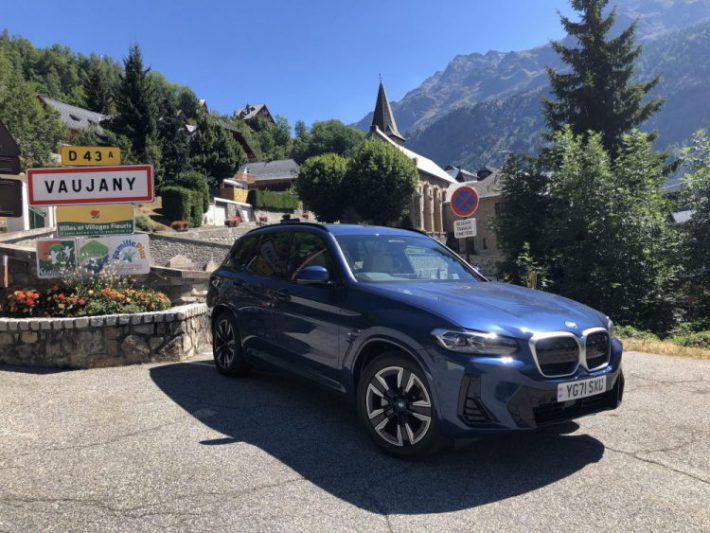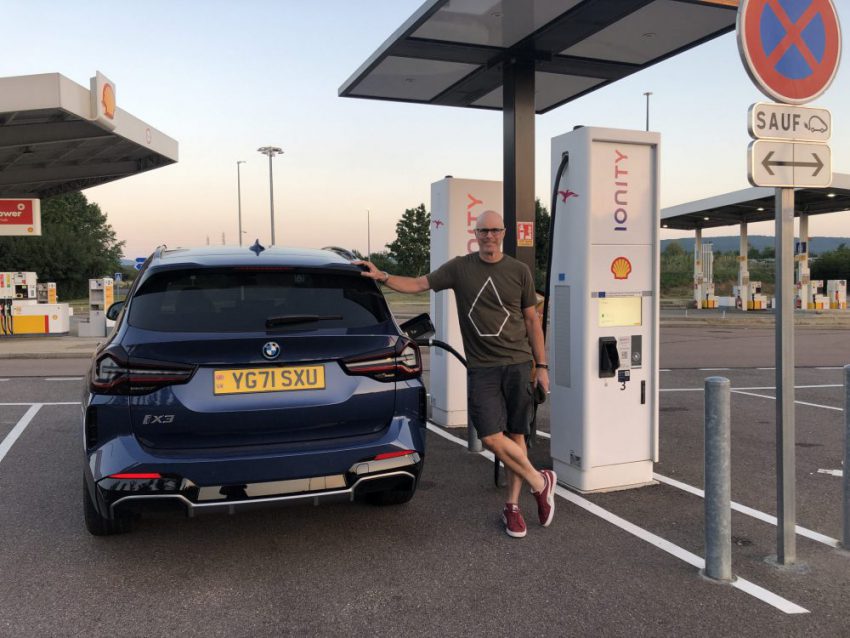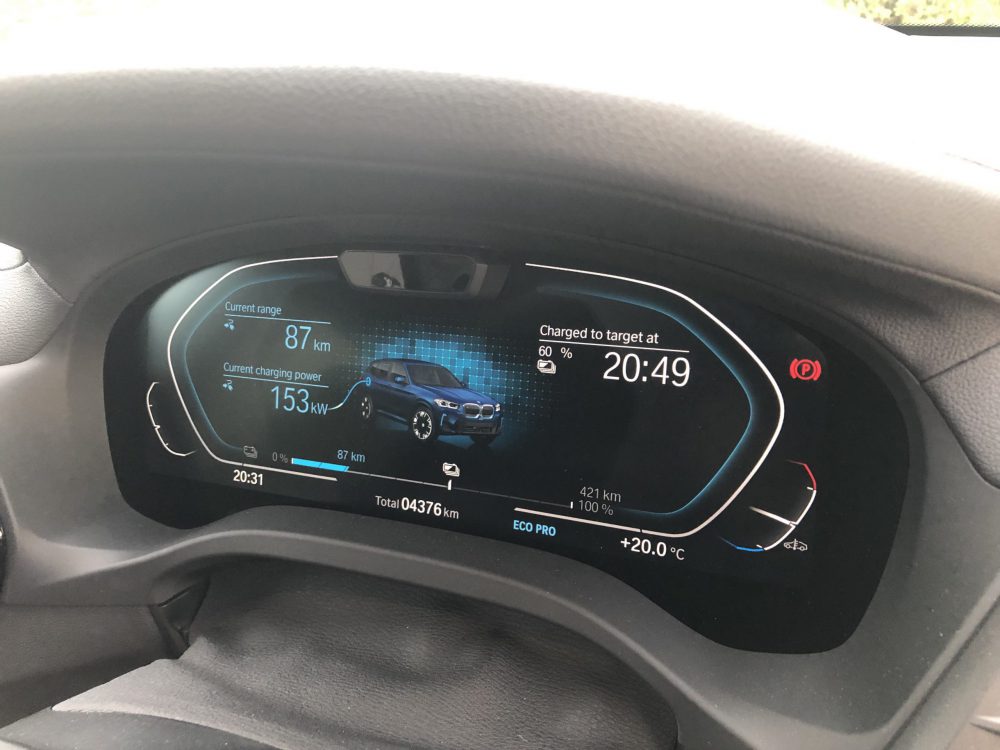
The move to electric cars is well underway. By 2030 – less than eight years away – you won’t be able to buy a new petrol or diesel car. Electric vehicles (EVs) are often said to be great for short journeys, not so brilliant when you need to charge on the go. So what will it be like to take an electric car on holiday?
For a glimpse at the future of long journeys, we took an all-electric BMW iX3 on an 1,100-mile round trip to the French Alps this summer.
It pays to know your car
The BMW iX3 has an ‘official’ range of a very reasonable 287 miles. In theory, assuming we started our journey in France with a full battery, we’d only have to charge once or at most twice to make it to our destination in the alps.
Reality is very different. The kind of driving you do has a huge impact on how far you can drive on a single charge. At 20 or 30mph around town, you notice the percentage of remaining battery charge barely moves.
At motorway speeds, particularly if you are going uphill, it seems to diminish at an alarming rate. We limited our speed to 70mph (the legal maximum in France is 81mph (130km/h). The result was the ‘real-life’ range was around 225 miles.

France is well served for charging points
France is slightly ahead of the UK when it comes to the number of EVs per public charging point. The International Energy Agency’s Global EV Outlook for 2022 says France has 14.7 EVs per charging point, the UK 21.
But unlike regular fuel pumps, where you pay at the service station, with electric charging you pay the energy supplier direct, either with a card or by using an app. To make this easier, we signed up with Chargemap ahead of going.
For a one-off 19.90€ (£17.12) registration fee, we got an RFID card which gave us access to 27,000 locations across France. Chargemap also has an app which tells you where the charging points are, how fast they are, whether they’re working and if they’re occupied.
It’s a different kind of driving
One of great features of the Chargemap app is if you input your destination and the car you’re using, it tells you when and where to stop. Because it takes the same amount of time to charge an EV battery from 20 to 80 per cent as it does from 80 to 100 per cent, it is biased towards more frequent but shorter stops.
Usually for us, a motorway stop on holiday involves sloshing as much fuel in as possible, going to the loo and buying a sandwich/crisps/biscuits, before leaving. It’s the leisure equivalent to a Formula One pitstop. With an EV you can’t do that.
At one stop we had an excellent meal (French motorway services do food much better than in the UK). At another, I had a half-hour sleep. And we never had to wait for a charging point, although at one services we did fill the last vacant spot. It meant that when we got back in the car, we were rested and ready for the next leg of the journey.

There’s a difference in chargers
As anyone who regularly charges an EV on the hoof will tell you, not all charging points are the same. There’s a choice between slow, fast, rapid and ultra-rapid. In real terms that means the difference between charging from 20 to 80 per cent in much less than an hour or it taking multiples of hours.
Clearly then ultra-rapid is the way to go and we had the greatest success finding these at motorway services. At the fastest (154kW), we added 45 per cent of charge in less than 30 minutes.
Rurally things aren’t so good
The town local to where we were staying had three charging points. Two of those were slow chargers. We stopped at one of those for a long lunch and it added a measly 10 per cent of charge.
We moved onto the rapid charger which had been occupied when we’d arrived. This gave 50 per cent of charge in just over an hour – the time it took us to go round the supermarket.
Driving an EV on long journeys is possible
Our trip was trouble free. On the way down when being conservative, we stopped six times, on the way back four. Overall, each trip took about 11 hours compared to the normal nine. We also learnt there’s a big difference between the motorway network – usually excellent – and off motorways which were variable.
In the village where we stayed, none of the charging points were working. Fortunately that wasn’t a big problem. But it could have been and the tourist office who look after them were very charming but didn’t understand how serious getting a charge is for the EV driver.
That hiccough aside, covering long distances in an EV was very enjoyable. It’s a cliché but driving more slowly and stopping more for longer made the journey part of the holiday. And of course EVs have no engine noise which also makes things more relaxing.
It wasn’t appreciably cheaper. I calculated it cost £190 in charge versus £210 if we’d been driving a 40mpg diesel. But money isn’t everything. Our trip was a glimpse through the door to our motoring future and I think it’ll be an enjoyable one – providing the roll-out of charging points keeps pace with EV sales.